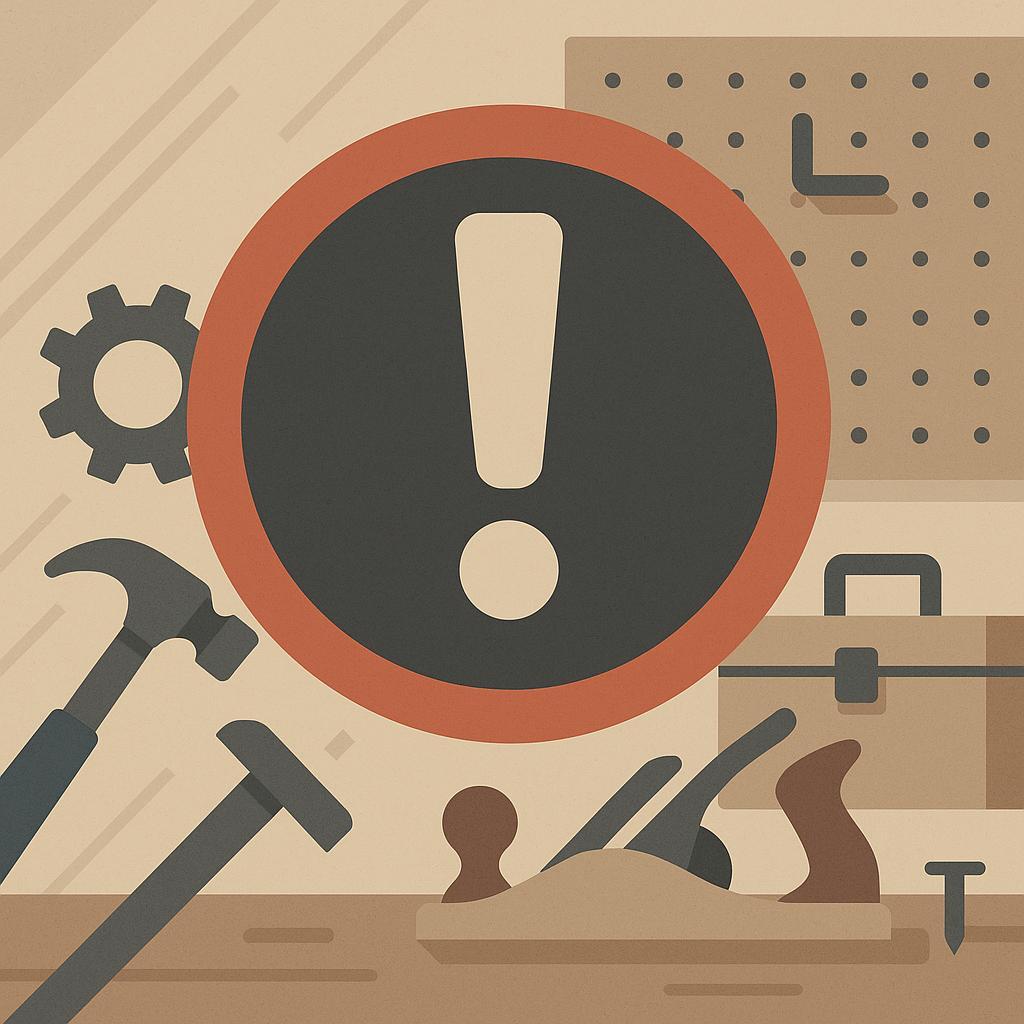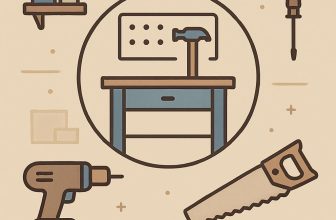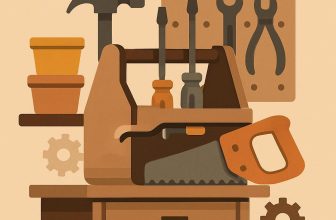
One wrong setup can turn a satisfying project into a frustrating string of misfires. In a beginner's workshop, the distance between a clean cut and a chaotic workspace is measured not by talent but by setup.Why does this matter? A thoughtful layout boosts safety, speed, and accuracy, turning learning into progress rather than frustration. This article guides you through the common setup mistakes-misplaced power outlets, poor lighting, cluttered workflows, and inadequate dust control-and shows you how to fix them before you start. Read on to learn practical tweaks that save time, protect you, and help every cut feel like progress.
:
Spotting Common Workshop Setup Mistakes Beginners Make
Start by mapping your space and defining dedicated zones for cutting,assembly,finishing,and storage. Take precise measurements of each machine's footprint, doorways, and walk clearance, then validate that you can move around without squeezing past tools. Run a speedy, imagined workflow on paper or a whiteboard to spot bottlenecks before you lay anything out.
Common workshop setup mistakes sneak in through habit rather than intention. Out-of-reach power sources force you to run cords across walkways; poor lighting creates shadows and increases fatigue; inadequate dust management clogs surfaces and irritates eyes; unbalanced work zones make you chase items across the space.Look for signals like crowded aisles, hoses draped across chairs or benches, or tools that block doors and drawers.
Use a simple check to compare your current layout against best practices. The table below highlights common issues, their impact, and quick fixes you can implement this week:
| Issue | Impact | Fix |
|---|---|---|
| Crowded layout | Slowed movement and awkward reach | Reposition machines to create clear 3-4 ft aisles |
| Poor lighting | Shadows, eye strain, reduced accuracy | Add bright, evenly distributed task lighting at work surfaces |
| Dust and fumes | Health risk and frequent cleanup | Improve dust collection; seal gaps; use respirators as needed |
| Overloaded outlets | Tripping/breaker trips | Spread power needs; use dedicated circuits or surge protectors |
schedule a quick 15-minute audit to test movement, reach, and workflow with real tasks. Move one piece of equipment or adjust a bench, then run through a brief mock job to confirm that everything feels natural. Keep a simple setup-change checklist and revise it after each major project so your space grows with your skills.
Build your Dream Workshop on a Budget →
Designing an Ergonomic Tool Layout for Efficient Workflows
Ergonomic tool layout begins with understanding your natural reach and torso motion. Design zones where the most-used tools live in the primary zone-within a comfortable arm's reach-so you can complete common operations without twisting or bending. Arrange secondary tools in the secondary zone and keep rarely used items in the tertiary zone to minimize clutter and interruptions. A well-balanced layout reduces fatigue,protects posture,and speeds up repetitive tasks by letting your hands move in straight,continuous paths.
To translate this into a real workshop, map your typical tasks and assign each tool to a zone. Start with a short list of your top 5-7 tools and position them where your hand naturally rests during your most frequent sequences.Use shallow trays, magnetic strips, and shallow drawers to keep items visible and reachable. Label orientations and keep cords and hoses from crossing your main workflow line to prevent tangling.
| Zone | Typical Tools | Recommended Reach |
|---|---|---|
| Primary | Measuring tape, marker, utility knife, most-used fasteners | Within arm's reach |
| Secondary | Wrenches, pliers, spare blades | Mid-distance |
| Tertiary | Specialty tools, rarely used items | Out of main path |
Structure the workflow along a logical path from raw material intake to finished piece: materials arrive to a prep area, then to assembly, then to finishing and inspection. Place feed-in items near the prep zone, and create a clear work corridor with non-slip mats. Consider vertical solutions such as wall rails or pegboards so items are stored by proximity to a task rather than by alphabet or size. This reduces cognitive load and keeps attention on the task, not tool hunting.
test and tune your layout. Do a 15-minute run-through with a typical project and observe where you reach for tools, where you pause, and where you bump into obstacles. record adjustments and implement small changes weekly. Use color-coding, labels, and quick-release storage to keep the system alive as projects change. An ergonomic layout isn't static-it evolves with your skills and the work you do most often.
Build Your Dream Workshop on a Budget →
Boosting Safety with Proper Lighting ventilation and Clear Aisles
Bright, even lighting is a cornerstone of safe, precise work. When shadows conceal hazards or moving parts,accidents and mistakes follow. To boost safety, aim for bright, glare-free illumination that covers every workstation. Practical steps include installing high-CRI LED fixtures with diffusers to reduce glare, positioning lights to minimize shadowed areas on your benches, and supplementing general lighting with task lighting at key stations. If possible, blend natural daylight with artificial light and choose a cool-neutral color temperature to enhance contrast for fine tasks.
| Element | Recommended Practice | Quick Check |
|---|---|---|
| Lighting | 500 lux at benches; even coverage; glare reduced | Bench area evenly lit; no sharp shadows |
| ventilation | Local exhaust at dust sources; cross-ventilation if possible | air feels clean at breathing level; filters clean |
| Aisles | Minimum width 0.9-1.2 m; cords/hoses routed along walls | Aisle is clear; no trailing cords |
Ventilation matters as much as lighting. Poor air quality can fog your vision, raise fatigue, and spread dust. Use local exhaust at the source whenever you cut, sand, or grind, and promote cross‑breeze by opening doors or windows when weather allows. Make sure air can flow past your breathing zone by keeping vents clear and avoiding air that blows dust toward your face.Regularly clean filters and inspect ducts so airflow stays steady.
Aisles and floor space keep you out of harm's way. Clear, unobstructed walkways reduce trips and provide quick escape routes in an emergency. Aim for a minimum width that fits one person plus space for a tool belt-generally around 0.9-1.2 m (36-48 in)-and store materials off the floor. Route cords and hoses along walls or overhead where possible,and mark boundaries with floor tape to delineate work zones and machine footprints.
Integrated safety routine: treat lighting, ventilation, and aisles as a single system. create a lightweight weekly checklist and perform quick audits before starting a project. Such as: verify all work areas are well lit,confirm a steady airflow exists,and ensure aisles are clear of cords and clutter.Small, consistent tweaks-adjusting light angles, cleaning filters, and re-slotting tools-pay off in a safer, more productive workshop.
Build Your Dream Workshop on a Budget →
Managing Power and Dust to Keep Your Workshop Clean and Safe
Managing power safely starts with a clear map of what runs on wich outlet. Before you add a tool to your bench, sketch a simple circuit plan: label each outlet with its purpose, and group high-draw machines on their own circuits. Never daisy-chain power strips for heavy equipment; use dedicated outlets or a properly wired circuit for large tools. Keep cords off the floor and out of traffic, using wall-mounted outlets, cord reels, or cable channels so you won't trip or pull a plug mid-cut. regularly inspect cables and replace worn plugs or damaged insulation instantly.
Dust control is a safety and health issue, not a luxury. Invest in a dust-collection system linked to your main tools, and seal joints so air doesn't leak into the shop. A cyclone or separator can dramatically improve bagging efficiency, while clean, well-maintained filters keep airflow strong. For smaller setups, add a portable HEPA air purifier to capture fine particles and improve visibility.Keep dust from migrating to work surfaces by scheduling routine cleanups and using closed storage for small debris.
| Tool | Power setup | Dust approach |
|---|---|---|
| Table saw | Dedicated circuit; direct dust hood | Dust collection hose to collector; seal cabinet |
| Planer | Dedicated outlet | In-line cyclone or separator; close-hood capture |
| Orbital sander | standard outlet on a surge strip | Portable HEPA purifier near work zone |
cultivate habits that keep both power and particulates in check: schedule a monthly room audit to verify cords, outlets, and ductwork; label cords and keep a spare set of filters on hand; and wear appropriate protection when creating fine dust. A tidy power and dust plan doesn't just look neat-it reduces fire risk, improves visibility, and makes your workflow smoother and safer every day.
Build Your Dream Workshop on a Budget →
Organizing Storage and Quick Access Systems for Beginners
Start with a simple map of your workspace and define three core zones: a fast-access bench, a dedicated fasteners and small-parts area, and a materials shelf. Measure the space and list the items you reach for most often, then position those items within arm's reach of the bench. Add a mobile cart or two for tools you rotate between tasks, and install a shadow board so every tool has a single, obvious home. This upfront organization sets a rhythm that makes beginners feel confident and less overwhelmed.
Adopt modular storage that grows with you. Favor clear bins or labeled drawers for tiny parts, pegboards for frequently used hand tools, and magnetic strips for metal implements. Place heavier items on lower shelves and lighter, smaller parts at eye level for fast recognition. A short weekly check helps rehome wandering items and keeps the system legible after a project shakes things loose. See below for a concise snapshot of common options.
| Storage Type | Best For | Pros |
|---|---|---|
| Clear Plastic bins | Small parts and hardware | Easy visibility; stackable |
| Pegboards | Hand tools and frequent items | Flexible layout; fast access |
| Labelled Drawers | Small components and fasteners | Organized; scalable |
| magnetic Strips | Metal tools | Instant grab; saves drawer space |
Labeling and color-coding are your best allies. Use concise container labels and a simple color scheme to denote zones (blue for fasteners, green for stock, red for adhesives). Keep container shapes consistent so you can slide items back in without guesswork. A well-designed shadow board for everyday tools minimizes searching and reinforces good habits for beginners.
Finish with a lightweight maintenance cadence. A 15-minute quarterly audit to resize, retire, or relocate items prevents clutter from creeping back.Track what gets used in recent projects and adjust your layout to match evolving workflows. The result is faster setup, fewer misplaced parts, and a calmer, safer workshop.
Build Your Dream Workshop on a Budget →
Implementing a Simple Pre Project Check to prevent Setup Errors
Implementing a simple pre-project check sets the tone for a smooth build by catching setup errors before you power tools. Start by surveying the workspace: clear a clean path for material flow, confirm adequate lighting, and verify that each station has the right surface, clamps, measuring tools, and safety barriers within reach. A quick mental rehearsal-imagining each step as you would perform it-helps reveal missing pieces before they become costly mistakes.
Next, confirm equipment readiness with a compact checklist you can glance at in seconds: power supply and outlets are sufficient for all tools, dust extraction is wired and running, and jigs and fixtures are positioned for the exact cut or assembly. Bring out spare blades, batteries, and clamps so you never start a task chasing missing parts. If something feels off, pause and address it now rather than mid-work.
run a brief dry run in a safe corner, tracing the full workflow from setup to finish.This helps validate alignment, measurements, and clearance for moving parts. During the dry run, check for unusual odors or overheating, confirm ventilation, and verify that safety switches function and guards are in place. A quick rehearsal can reveal less obvious issues-like a misaligned track or a loose connector-before you cut or assemble.
Finish with a one-page pre-project checklist that travels with the project file. Make it a living document: list the critical steps, assign ownership for each item, and keep a simple pass/fail log. After each project, review the results and refine the checklist for the next time. This repeatable habit reduces rework and helps beginners build confidence as they tackle more complex setups.
Build Your Dream workshop on a Budget →
Q&A
What's the best way to plan a safe, efficient workshop layout for a beginner?
Start with a simple workflow: identify rough zones for raw materials, assembly, and finishing. Measure your space and sketch a path from work surface to storage to waste disposal. Leave clear aisles and place heavier tools against sturdy walls.
How should I determine the right workbench height?
Stand naturally with your arms at your sides and let your forearms rest comfortably on the surface; your bench should support that posture.A common starting range is about 28-32 inches, but adjust for your height and whether you work standing or seated.If possible, test with a temporary setup before committing to a fixed height.
What are the most critical safety considerations for power and electrical setup?
Keep cords organized and out of the way to prevent trips. Use grounded outlets and avoid daisy-chaining power strips for high-draw tools. if the space is damp or near a sink, install a GFCI and unplug tools when not in use.
How can I keep tools accessible without creating chaos?
Group tools by task and place frequently used items within easy reach. Use pegboards, labeled bins, and shallow drawers to reduce rummaging. Regularly audit your setup and remove rarely used tools.
What lighting setup improves accuracy and reduces eye strain?
Aim for bright, even illumination with minimal shadows: overhead LEDs plus a focused task light at the work surface. Color temperature around 4000-5000K helps true color and reduces fatigue.Position lighting to avoid glare on shiny surfaces and to illuminate the work area without creating harsh hotspots.
Insights and Conclusions
Avoiding these common workshop setup mistakes is both guardrail and gateway: it prevents missteps and invites us to work with focus. The core takeaway is simple: plan your space with purpose, align tools and materials, and respect safety and light. When the bench is orderly, sessions stay on track, mistakes shrink, and your projects gain confidence and quality. This matters to woodworking enthusiasts because progress hinges on a reliable base: a setup you trust. start today by trying a small project, or revisit a guide to re-check your layout, lighting, and dust control. with thoughtful tweaks, your shop can become a place of steady momentum and quiet joy.







Great tips! I wish I had known about these mistakes before my first workshop; it would have saved me so much time and stress!
Absolutely! Avoiding these pitfalls can make such a difference in the overall success and enjoyment of the workshop for both the facilitator and attendees!
These insights are invaluable! It’s so easy to overlook details when you’re starting out, but addressing these common mistakes can truly elevate the experience for everyone involved.
These are such important points! Learning from others’ mistakes can really help new facilitators create a more effective and engaging workshop environment right from the start.
I couldn’t agree more! Recognizing and addressing these common setup mistakes can really empower newcomers and set the stage for a successful workshop experience.
I completely resonate with this! Being aware of these setup pitfalls not only smooths the process for beginners but also enhances the overall learning atmosphere, making workshops far more effective.
I completely agree! Identifying and avoiding these common mistakes can significantly enhance the learning experience for both the facilitator and participants, making workshops not only more productive but also more enjoyable.
These tips are essential! Understanding and preventing these common workshop setup mistakes can make a world of difference for beginners, ensuring that everyone feels welcome and engaged right from the start.
Absolutely! Avoiding these common workshop setup mistakes is crucial for creating a positive atmosphere where participants can thrive, and it really sets the tone for a productive learning experience.
These insights are spot on! By steering clear of common setup mistakes, beginners can create a welcoming and efficient space that allows everyone to fully engage and benefit from the workshop.